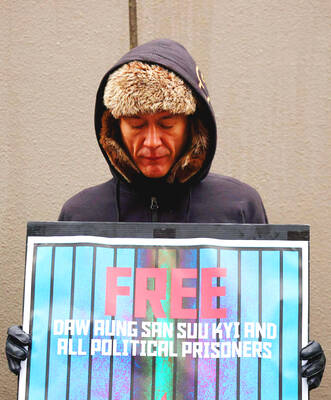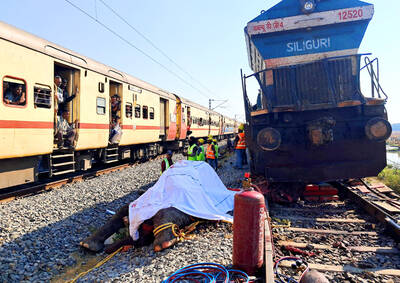The noose snaps and another body collapses in Singapore's Changi prison gallows at dawn on a Friday, while nearby elderly men and women dance the rythmic rituals of tai-chi in perfectly neat parks.
Elsewhere in what is regarded as the safest nation in Asia, the younger generations are readying for work and school, while newspapers reporting virtually no local crime wait to be bought at fastidiously clean news-stands.
Dawn on Friday is execution time in Singapore, the nation that human-rights group Amnesty International says has the highest death penalty rate per capita in the world.
According to Amnesty, 408 people have been hanged to death here since 1991, with authorities, who keep a tight grip on the local media, ensuring there is little public debate about its controversial system of capital punishment.
And just as many Asian nations aspire to emulate Singapore's economic success, it appears they are also increasingly following the city-state's zero-tolerance approach to crime and robustly embracing the death penalty.
Across many parts of Asia, capital punishment is on the rise, with China, Vietnam, Bangladesh and most recently the Philippines just some of the countries making international headlines with their enthusiastic attitude towards the death penalty.
"While in other regions around the world governments move away from the death penalty, we are seeing in Asia quite a substantial increase in the use of the death penalty," said Amnesty's Asia program interim director, Ingrid Massage.
Massage cited higher crime rates and increasing security fears generated by the global war on terrorism as factors in the worsening trend.
Although Singapore has the highest rate of executions per capita, China is the clear leader in sheer number of people put to death, with the government's "strike-hard campaign" against corruption throwing renewed focus on capital punishment.
Chinese authorities ensure the total numbers executed each year remain secret. Yet Amnesty said it had been able to determine 1,060 executions in China in 2002 and 2,468 the year before, with the actual number believed to be far higher.
In one particular death frenzy, Amnesty said at least 150 accused drug criminals were executed across China in June, 2002 to mark the UN' International Drugs Day.
"China stands out completely on its own. By all standards it goes off the scale," Massage said.
In Vietnam, the use of the death penalty is also on the rise, while tolerance for campaigning against the punishment is falling.
As in China, the official number of executions is a tightly held state secret, but AFP reported last month that at least 62 people were put to death by firing squad last year, mainly for murder and drug trafficking.
The Philippines joined its more authoritarian regional neighbors on the issue last month when President Gloria Arroyo announced that a near four-year moratorium on capital punishment would be lifted on Jan. 30 with the scheduled execution of two kidnappers.
The Philippines is closely following Japan, where 43 people have been executed since 1993.
South Korea also allows the death penalty with justice ministry figures showing 231 people were executed between 1976 and 1997.

The Burmese junta has said that detained former leader Aung San Suu Kyi is “in good health,” a day after her son said he has received little information about the 80-year-old’s condition and fears she could die without him knowing. In an interview in Tokyo earlier this week, Kim Aris said he had not heard from his mother in years and believes she is being held incommunicado in the capital, Naypyidaw. Aung San Suu Kyi, a Nobel Peace Prize laureate, was detained after a 2021 military coup that ousted her elected civilian government and sparked a civil war. She is serving a

REVENGE: Trump said he had the support of the Syrian government for the strikes, which took place in response to an Islamic State attack on US soldiers last week The US launched large-scale airstrikes on more than 70 targets across Syria, the Pentagon said on Friday, fulfilling US President Donald Trump’s vow to strike back after the killing of two US soldiers. “This is not the beginning of a war — it is a declaration of vengeance,” US Secretary of Defense Pete Hegseth wrote on social media. “Today, we hunted and we killed our enemies. Lots of them. And we will continue.” The US Central Command said that fighter jets, attack helicopters and artillery targeted ISIS infrastructure and weapon sites. “All terrorists who are evil enough to attack Americans are hereby warned

Seven wild Asiatic elephants were killed and a calf was injured when a high-speed passenger train collided with a herd crossing the tracks in India’s northeastern state of Assam early yesterday, local authorities said. The train driver spotted the herd of about 100 elephants and used the emergency brakes, but the train still hit some of the animals, Indian Railways spokesman Kapinjal Kishore Sharma told reporters. Five train coaches and the engine derailed following the impact, but there were no human casualties, Sharma said. Veterinarians carried out autopsies on the dead elephants, which were to be buried later in the day. The accident site

‘EAST SHIELD’: State-run Belma said it would produce up to 6 million mines to lay along Poland’s 800km eastern border, and sell excess to nations bordering Russia and Belarus Poland has decided to start producing anti-personnel mines for the first time since the Cold War, and plans to deploy them along its eastern border and might export them to Ukraine, the deputy defense minister said. Joining a broader regional shift that has seen almost all European countries bordering Russia, with the exception of Norway, announce plans to quit the global treaty banning such weapons, Poland wants to use anti-personnel mines to beef up its borders with Belarus and Russia. “We are interested in large quantities as soon as possible,” Deputy Minister of National Defense Pawel Zalewski said. The mines would be part